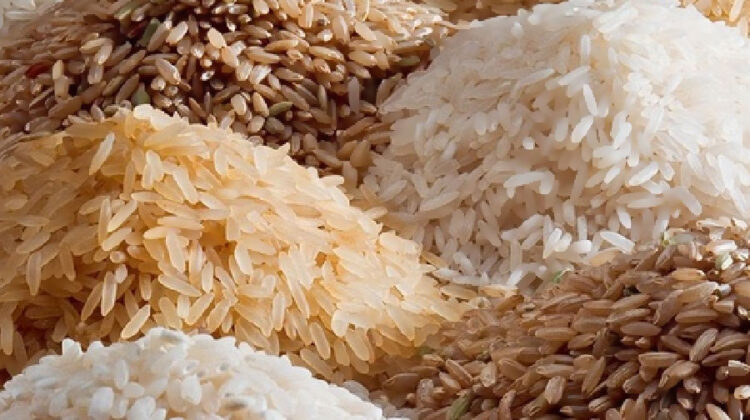
Indian rice exporters start new year on a positive note as Vietnam buys after decades
Indian rice exporters have started the New Year on a bright note, bagging orders to ship to Vietnam, the world’s third-largest exporter, after decades and expecting to cash in on the Bangladesh government order to lower Customs duty on rice imports.
“We have got orders to export rice to Vietnam between 50,000 tonnes and one lakh tonnes. It may not buy consistently from India,” said Rice Exporters Association (REA) president BV Krishna Rao.
Vietnam is buying white rice, including 100 percent broken.
The 100 percent broken rice is priced lower than other grades by over $50 (Rs 3,650) a tonne and India, the world’s second-largest rice producer, is the most competitive destination for rice of such a grade.
Vietnam has bought at least 70,000 tonnes of 100 percent broken at $310 a tonne (Rs 22,700), Reuters reported quoting unnamed industry officials.
In the global market, Vietnam is quoting its five percent broken white rice at a nine-year high of $500-505 a tonne (Rs 36,600-37,000), while Thailand, the second-largest exporters, is quoting at $510-516 (Rs 37,325-37,750).
India is quoting its five percent broken par-boiled rice at $381-387 a tonne (Rs 27,900-Rs 28,300). The International Grains Council said India’s 25 percent broken rice was ruling at $377 a tonne (Rs 27,600).
The other development that augurs well for Indian rice exports is Bangladesh cutting its Customs duty on rice to 25 percent from 62.5 percent to augment supplies of the cereal.
Bangladesh, the world’s third-biggest rice producer, has emerged as a big importer of the cereal since last year as its stocks have got depleted after floods ravaged its crop and the cereal’s prices rose to a record.
A multinational firm’s export-import official said Vietnam’s current purchase could be a “one-off” one since its new rice crop is scheduled to arrive in February.
Rao indicated that the export window to Vietnam could be open until February only when the new crop comes.
Exporters say that Vietnam could be buying the 100 percent broken either for producing other products such as noodles or for diversion to China.
“We don’t know if it is happening,” said Rao, when asked if Vietnam would be diverting Indian rice to China as is being rumoured in some trade circles.
The multinational firm official said that the cheaper rice imported from India would go into the production of noodles.
Vietnam has turned to India, the world’s largest rice exporter, as it has run shortage of supplies after having met demand from the Philippines.
Though Vietnam has 2.7 lakh tonnes of rice stocks with it, its quality is reported to be poor. It can be used only as an animal feed or for producing alcohol-based beverage.
In 2019, Vietnam exported 6.37 million tonnes of rice but last year they are estimated to have dropped by 3.5 per cent. Exports dropped mainly since Hanoi halted signing of new contracts in March last year for some time to review its stocks.
Vietnam is projected to have produced 21.35 million tonnes of rice last year.
India, on the other hand, has record rice stocks with it, besides procurement for buffer stocks to be maintained by the Food Corporation of India (FCI) topping a record 50 million tonnes from October 1 till January 3.
As on January 1, the FCI had 14.5 million tonnes of rice in its warehouses and 33.9 million tonnes of paddy that can yield 22.71 million tonnes of rice.
India also produced a record of 118.43 million tonnes of rice last season (July 2019-June 2020). This season, Kharif rice production has been estimated at 102.36 million tonnes against 101.98 million tonnes last season, as per the Ministry of Agriculture’s first advance estimate of foodgrain production for 2020-21.
REA’s Rao said that Bangladesh will announce details of importers and the quantity allocated to them for rice imports on January 10.
Bangladesh Food Minister Sadhan Chandra Mazumdar told the media last week that Bangladesh importers would have to apply to the Food Ministry for permission to import before January 10.
The neighbouring country could import as much as five lakh tonnes until June and India would stand to benefit immensely.
Exporters said Bengal could gain from this since most exports could take place from the State but Rao said the Howrah and Hooghly may have problems in handling bigger vessels.
The multinational firm official said another problem Indian exports could face is offloading rice in Bangladesh.
Chittagong is the main port for Bangladesh and shippers say that they face problems of a backlog of containers caused by slow delivery, congestion of ships in the outer anchorage and evacuation of jetties due to the threat of cyclones.
“The other port is Mongla which is a river-based one and congested. It could force exporters to pay demurrages for the delay in clearances of shipments,” the official said.
Despite this, Bangladesh would buy more Indian rice, including imports of at least 1.5 lakh tonnes through global tenders over the next couple of weeks.
Dhaka finalised tenders for 1.5 lakh tonnes till last week. Of this, one lakh tonnes of the rice will arrive in Bangladesh ports by the end of this month.
